Tibet or Mongolia
19th century
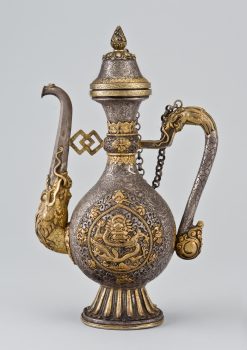
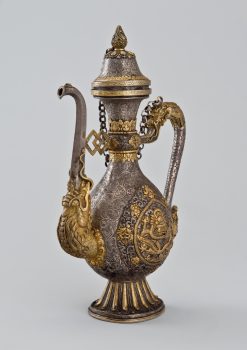
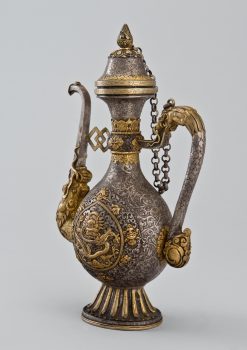
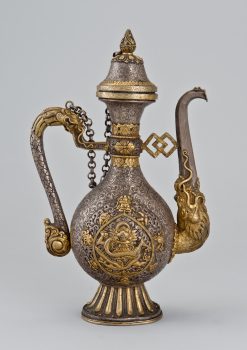
Tibet or Mongolia
19th century




Ewers such as this are used for pouring liquid offerings during daily offerings, initiation ceremonies, and other rituals. This ewer could have been part of a monastic setting or a lay household shrine and is a good example of the exquisite silver metalwork with traditional Tibetan symbols and aesthetic elements found in ritual items from the region.The central decorative motif on the belly of the vessel is a gilt dragon surrounded by Buddhism’s Eight Auspicious Symbols, also highlighted in gold. The spout emerges from the mouth of a water monster (makara). The base is in the pattern of a stylized lotus much like bases found on sculpture.
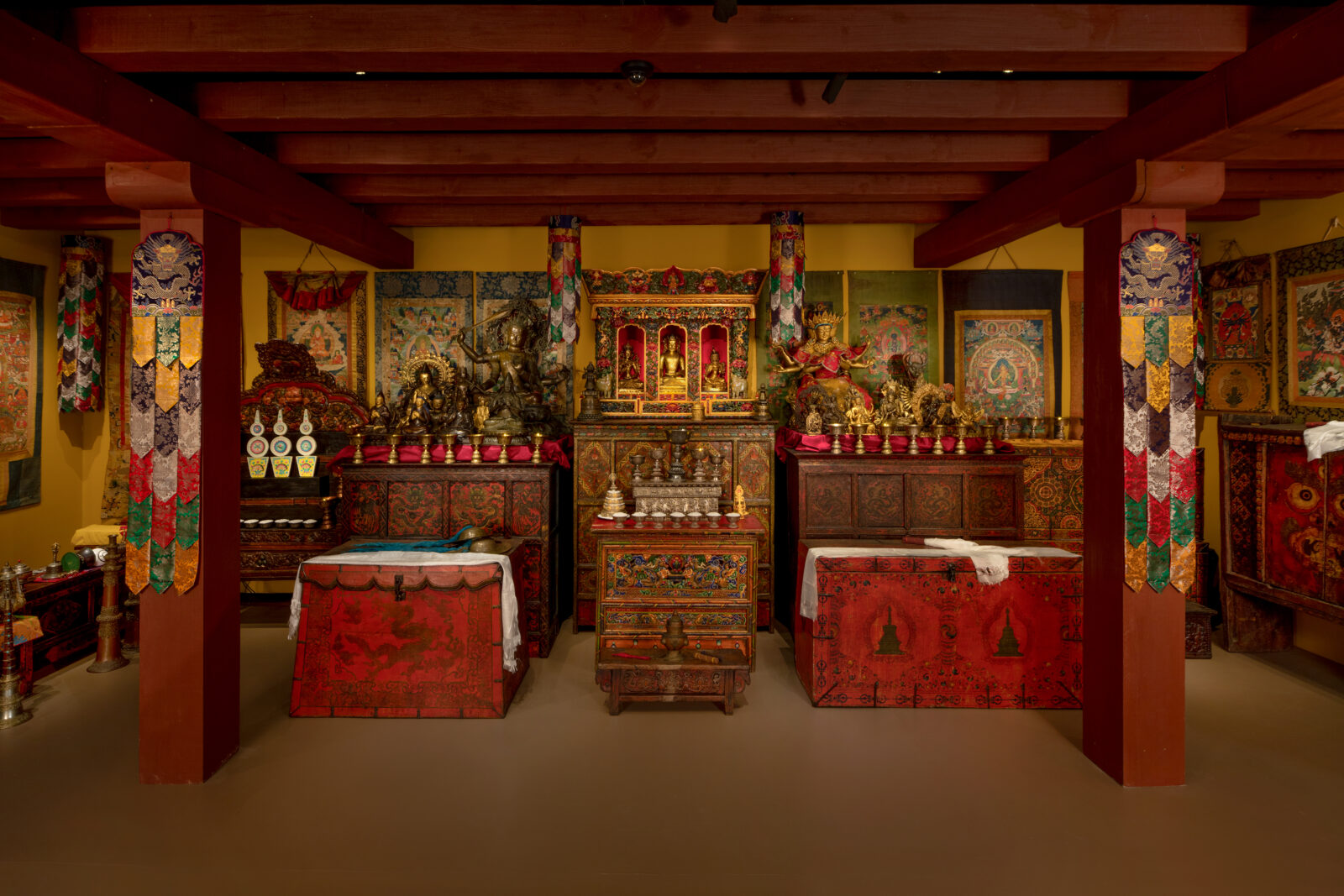
Photo by Dave de Armas
Prescribed practices that carry symbolic meaning and value within a specific tradition and are intended to attain a desired outcome. Rituals are usually done as part of a ceremony or regular routine.
Mongolians have been widely active in the Tibetan Buddhist world, playing a key role in Tibetan culture, politics, and relations with China. In the 13th century, the Mongol Empire—the largest contiguous empire in world history—facilitated the spread of Tibetan visual culture.
Today, Tibetans primarily inhabit the Tibetan Plateau, situated between the Himalayan mountain range and the Indian subcontinent to the west, Chinese cultural regions to the east, and Mongolian cultural regions to the northeast. During the 7th to 9th century, Tibetan rulers expanded their empire across Central Asia, and established Buddhism as the state religion.
Get the latest news and stories from the Rubin, plus occasional information on how to support our work.